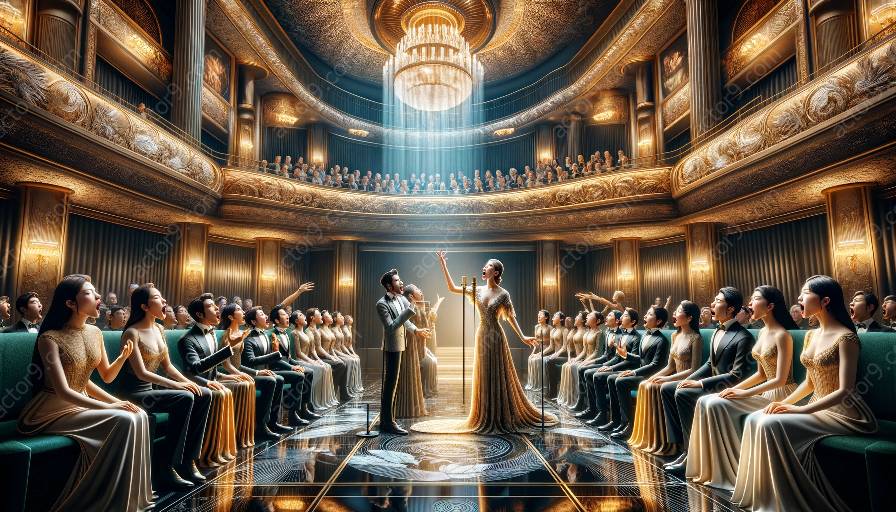Extended vocal performances harness the power of the voice as an instrument and explore the limitless possibilities of sound, space, and dynamics. The interplay between these elements creates a captivating and immersive experience that pushes the boundaries of traditional vocal techniques.
Understanding Sound in Extended Vocal Performances
In extended vocal performances, sound is not limited to conventional singing. Artists utilize a wide range of vocalizations, including overtones, throat singing, vocal fry, and multiphonics, to create a diverse sonic palette. These techniques allow performers to manipulate the timbre and resonance of their voices, resulting in a rich and complex auditory experience.
Exploring Space and Acoustics
Space plays a crucial role in extended vocal performances, as artists embrace unconventional performance settings to interact with acoustics in unique ways. From immersive, site-specific performances in natural landscapes to experimental presentations in industrial spaces, the relationship between the vocal performance and its spatial context creates an intriguing sonic environment that transcends traditional concert settings.
Dynamic Expressions in Extended Vocal Performances
Extended vocal techniques empower performers to express an expansive range of dynamics, allowing for moments of delicate intimacy and powerful crescendos. Through techniques such as glissandi, microtonal fluctuations, and vocal percussion, artists manipulate the dynamics of their voices to create a nuanced and emotionally compelling performance that captivates audiences.
The Integration of Extended Vocal Techniques
Extended vocal techniques are at the heart of this innovative art form. Artists push the boundaries of traditional singing by incorporating diverse vocal techniques such as circular breathing, multiphonic singing, and vocal harmonics. These techniques expand the sonic possibilities of the voice and enable performers to craft intricate, otherworldly sounds that defy conventional vocal norms.
The Role of Vocal Techniques
Vocal techniques serve as the foundation of extended vocal performances, providing artists with the technical proficiency to execute complex vocal maneuvers. Through breath control, resonance manipulation, and articulatory precision, vocal techniques form the basis for the exploration of sound, space, and dynamics, allowing performers to push the boundaries of their vocal expression.
Extended vocal performances represent a fusion of creativity, technical skill, and sonic exploration, showcasing the interplay of sound, space, and dynamics in a spellbinding manner. By delving into the innovative realm of extended vocal techniques and vocal techniques, artists continue to redefine the possibilities of vocal expression, captivating audiences with their mesmerizing and transformative performances.









































